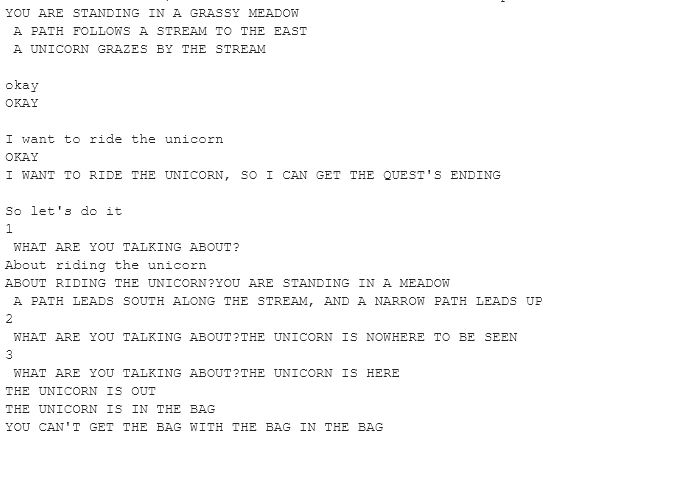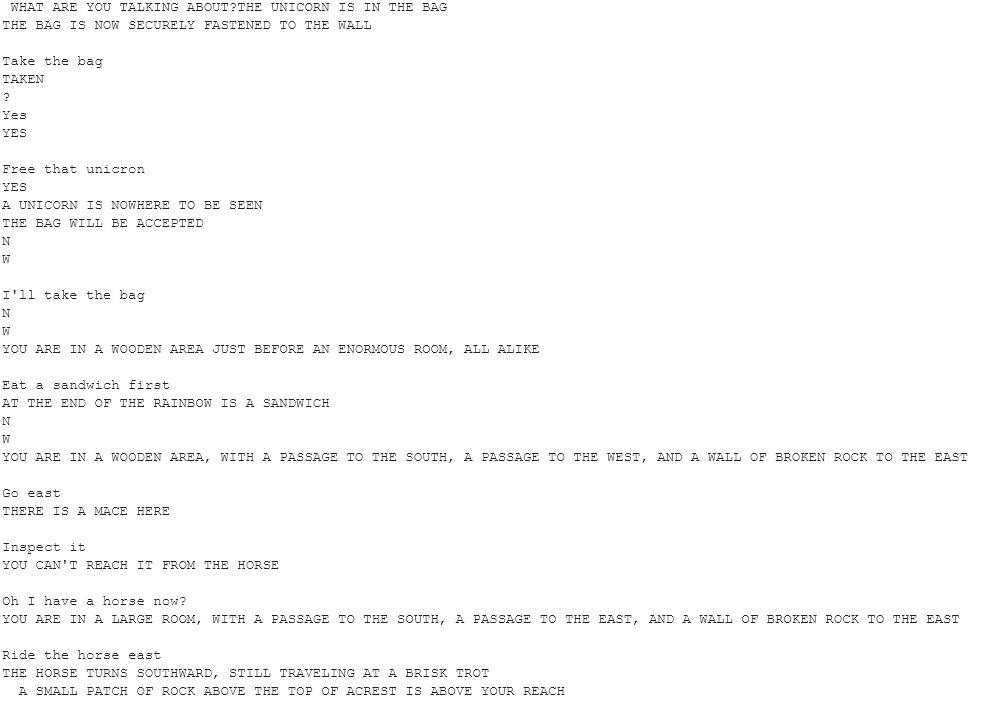
Some of the earliest computer games had no graphics at all and instead relied on a text-based user interface. To this day, one of the most popular genres is text adventure gaming, sometimes called interactive fiction, where worlds are described in the narrative and the player submits typically simple commands to interact with the worlds.
If you’re old enough (like I am), you might remember Infocom’s The Hitchhiker’s Guide to the Galaxy and Zork. The format has now replicated by a machine learning algorithm that uses neural networks to create a text-based adventure game in real-time.
Futurism reports that the game was made by Northwestern University neuroscience graduate student Nathan Whitmore, who was inspired by the Mind Game from the science fiction novel Ender Game. The Mind Game adapted to the interests of each student in real-time, and was used by the Battle School staff to analyze the student’s personality and psychology.
The AI is based on the amazing (and, quite frankly, scary) GPT-2, the fake news-writing algorithm created by OpenAI. We covered GPT-2 in a previous story.
If this all sounds exciting, you can have look for yourself by playing the game. Follow the instructions on the page by first copying the code to your Google Drive account. Don’t be intimidated by the install process — it’s quite straightforward.
Personally, I had a lot of fun playing GPT Adventure, although the environment can get glitchy fast, making the game seem incoherent. I mean… just check out this exchange out (the upper case text is the AI).


Now, imagine the same format only, this time, with motion graphics as well. With a bit more coherence, such a game would look and feel like traveling through a dream. And at the current rate of development, it might not be long before we get the opportunity to play such a game.
So, if any of you had the chance to play GPT Adventure, paste some interactions in the comments section. This should be fun!


